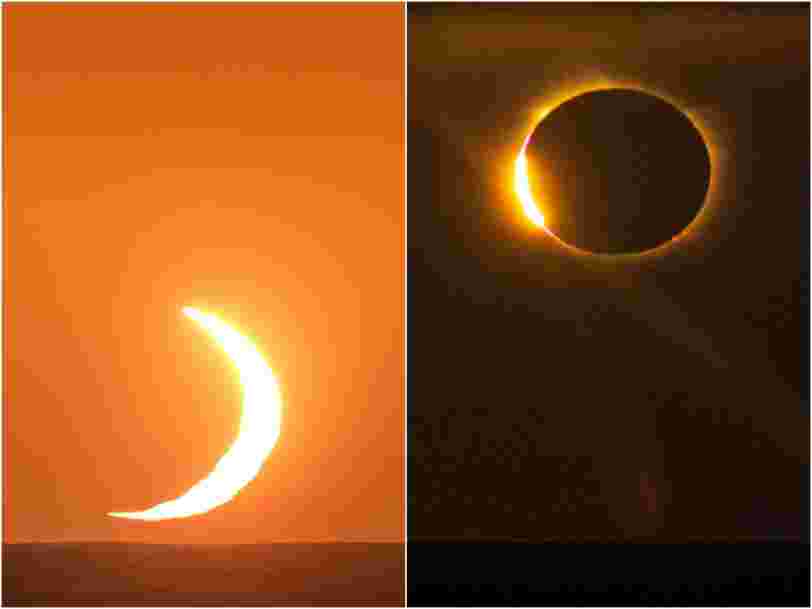Mesmerizing photos of this year's only total solar eclipse show a rare crescent sunrise over Antarctica
Morgan McFall-Johnsen | Publié le | Mis à jour le
- A total solar eclipse blackened skies above Antarctica and the Southern Ocean on Saturday.
- Photographers traveled to Antarctica to watch the moon block the sun and cast its shadow on Earth.
- Their photos show a crescent sun rising above the sea , then becoming a dark sphere ringed in light .
A black sun reigned over Antarctica briefly on Saturday, as a total solar eclipse plunged parts of the ice continent into darkness.
The moon moved between Earth and the sun, casting its shadow over the Southern Ocean and Antarctica.
"The moon is always casting a shadow in the solar system, but periodically that shadow passes over the Earth," meteorologist Jay Anderson said in a video produced by adventure-cruise company Lindblad Expeditions . "When that happens, we want to be underneath that shadow."
That's why Anderson joined tourists and professional photographers aboard a Lindblad Expeditions ship, the "National Geographic Endurance," which sailed into the Southwest Atlantic Ocean, then dropped anchor in the eclipse's path off the shores of Antarctica.
On average, there are two to four solar eclipses each year, according to NASA , but not all are visible from land or populated areas. Many of those eclipses are partial ones — the moon doesn't cover the entire sun. Saturday's event was the only total solar eclipse of 2021.
"It's such an exotic location," Anderson said of Antarctica, adding that witnessing the eclipse there was "cream on top of the milk."
The spectacle began with a rare crescent sunrise, as the sun, partially obscured by the moon, peeked above the sea.
The crescent sun making its way through the sky was "like a big smile looking at you," Anderson said. The smile grew thinner as the moon moved between Earth and the sun.
Soon the moon totally eclipsed our star. Onlookers could only see the sun's corona — its outermost atmosphere — peeking around the edges of the moon. The corona is only visible to the naked eye during a total eclipse.
"A total solar eclipse is such a beautiful thing, because it brings everybody together, and for one minute everybody's going to be looking up and enjoying just the same moments," photographer Andrew Studer said in the video.
Moments of totality — when the moon completely blocks the sun — are brief, lasting just a minute or two, depending on where you are on Earth.
Then the sun began to peek around the other side of the moon.
Total solar eclipses don't happen every year. The next one will occur on April 20, 2023, over parts of Southeast Asia and Australia, according to TimeandDate.com .
Antarctica won't see another total solar eclipse until 2039.
Via PakApNews